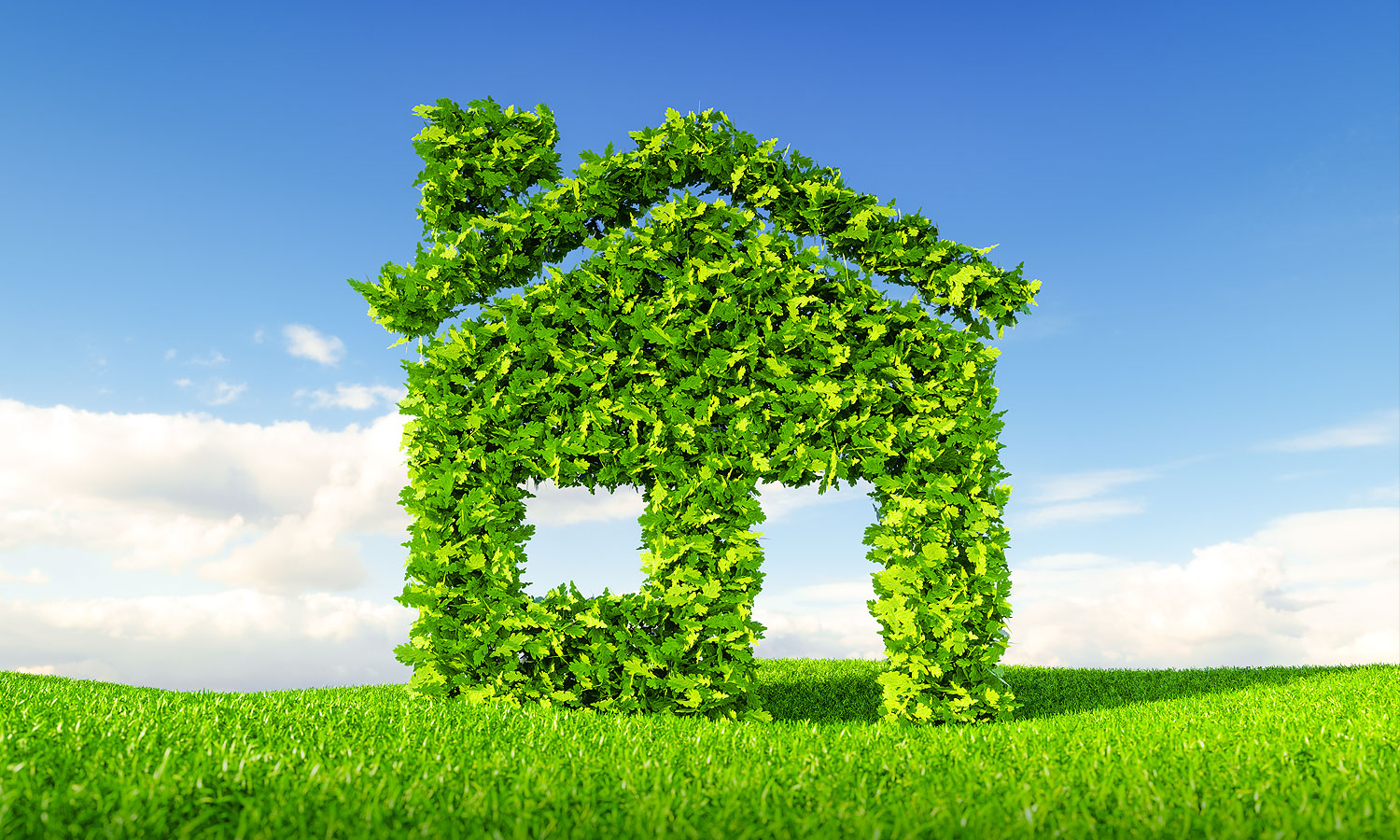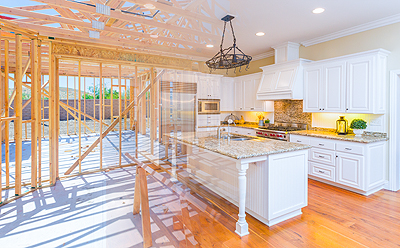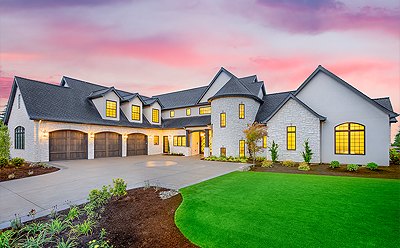5 Ways to Make Your Home Greener
Many people are choosing to embrace a more responsible, sustainable lifestyle — “greener” living — to help the environment. Yet becoming more environmentally friendly can extend beyond reusable water bottles and shopping bags. Your house can “go green,” too.

There’s a potential benefit for homeowners to do so: You might save some “green” on your monthly utility bills, including energy and water. With that in mind, let’s take a closer look at strategies for (and potential benefits of) reducing your home’s impact on the environment.
What makes a house green?
Making your home “greener” — or more environmentally friendly — includes incorporating eco-conscious practices and lifestyle adjustments to help reduce energy consumption, minimize waste and promote sustainability. A green household is an efficient one, putting efforts in place to save energy, water and materials to benefit the planet and your pocketbook.
Ready to go green? Start with a home energy assessment.
A home energy assessment can help demonstrate how much energy your home uses — and prioritize areas where you could be more efficient. The U.S. Department of Energy (DOE) recommends the assessment be conducted by a professional,1 however, they also offer do-it-yourself tips to help, including (but not limited to):
- Locating and addressing drafts around windows and doorframes that can let heat enter or exit your home
- Checking exhaust fans and ventilation near stoves (especially gas ones) and fireplaces
- Inspecting the quality and status of caulking and insulation
- Reviewing and replacing filters on heating and cooling units
»Tip: As you look to make your home greener, you may also save money and leave more green in your wallet. Explore what incentives are available to help defray the cost. The Inflation Reduction Act of 20222 expanded the home energy tax credit amounts and types of qualifying expenses. There may also be rebates available from appliance manufacturers or your utility company.
Here's how to make your home greener:
Below are five ways toward a greener home — and some potential financial incentives.
1. Energy efficiency upgrades
When it comes to greener energy and water usage inside your home, think about little changes — upgrading old power strips to prevent power drain or replacing old bulbs with LED lighting (which lasts longer and uses less energy). Small laundry hacks like washing your clothes with cold water and hanging them to dry also save energy.
A bigger step toward green living is to invest in energy-efficient appliances. Upgrading old appliances to newer ones with the ENERGY STAR symbol significantly reduces electricity consumption. You may wish to explore energy efficiency improvements3 with high impact and potential tax credits, including adding insulation, energy-efficient windows and smart thermostats.
Programmable thermostats mean that you don’t have to remember to adjust the temperature throughout the day. They also optimize heating and cooling to help maintain a more consistent temperature in extremely hot or cold months, reducing energy waste.
»Tip: Improving insulation in your home and sealing drafts to minimize heating and cooling energy needs not only saves energy, but also it may extend the life of your HVAC system.
2. Sustainable materials and practices
If you’re building or remodeling, consider eco-wise choices from the start. Some of them rival — or exceed — the quality of traditional materials. For instance, eco-friendly building materials like stone, bamboo flooring, reclaimed wood or recycled materials can add texture and appeal. Prioritize products made from recycled materials and if you’re renovating, look at how you can incorporate and use natural light during the day to help save energy. And, following up on on tip #1, you may want to include energy efficiency steps like adding insulation or using energy-efficient appliances.
You can also practice energy-saving habits like turning off lights when not in use and unplugging electronics.
Food and yard waste make up a significant portion of landfills and produce harmful methane gas. Be sure your home participates in community or neighborhood recycling efforts. If you’d like to move a step beyond the basics, you might want to explore rainwater harvesting and start composting organic waste4 to create nutrient-rich garden soil and reduce landfill contributions.
3. Renewable energy sources
Renewable power not only reduces reliance on non-renewable energy sources, but it may also dramatically cut down on your carbon footprint. Consider installing solar panels to generate renewable energy for your home.
Other renewable energy options5 include geothermal heat pumps and solar water heating. And on the solar front, many homeowners sell excess energy back to their utility providers. Check with your utility company to see how that might work for you — and help pay off your investment in renewable energy.
»Tip: Like energy-efficient appliances and home upgrades, rebates and incentives may be available to help install renewable energy options in your home. Check to see if your house is eligible for solar rebates.6
4. Water conservation
Conscious water management plays a crucial role in greener living. Adopt strategies to reduce water usage, such as installing low-flow fixtures such as showerheads, faucets and water-saving toilets to reduce water usage without compromising functionality.
According to the U.S. Environmental Protection Agency (EPA), the average family can waste a whopping 180 gallons of water7 per week (9,400 gallons annually). To mitigate this problem in your home, talk with your family about the value of shutting off water faucets and being careful about how much water they use when showering. And don’t forget to regularly check8 for leaks in pipes, faucets and toilets to prevent unnecessary water waste. Routine maintenance and prompt repairs can make a big difference.
5. Landscaping and outdoor spaces
Water use — and waste — can happen outside of your home as well. Native plants require less water and maintenance while supporting local ecosystems. Consider using native plants to elevate your outdoor space.
Don’t know what to plant? Start by determining your plant hardiness zone,9 provided by the U.S. Department of Agriculture (USDA).
You can also enhance your curb appeal by making thoughtful landscaping choices that align with eco-friendly principles. Design exterior areas with water-efficient landscaping techniques10 like xeriscaping to minimize water usage. Maintain healthy soils, use mulch to save water and only irrigate when necessary. If you are watering your landscape, be sure your sprinkler system is labeled “WaterSense”11 to help reduce water waste.
»Tip: You can also collect rainwater for outdoor use in gardens, and if you have a pool, consider installing a cover12 to help maintain the water level — and use less water.
The takeaway
From saving energy to saving water, integrating these five fundamental principles in your home can help you embark on a journey toward a greener, more sustainable lifestyle. They may also make your home more desirable when it’s time to sell.
When you’re ready to sell your Central Texas home — or find a new one that fits your green goals — remember that RBFCU’s preferred real estate partner, Kuper Sotheby’s International Realty, is here to help you move beyond your expectations toward an extraordinary real estate experience.





.jpg?sfvrsn=53ffb2a8_4)